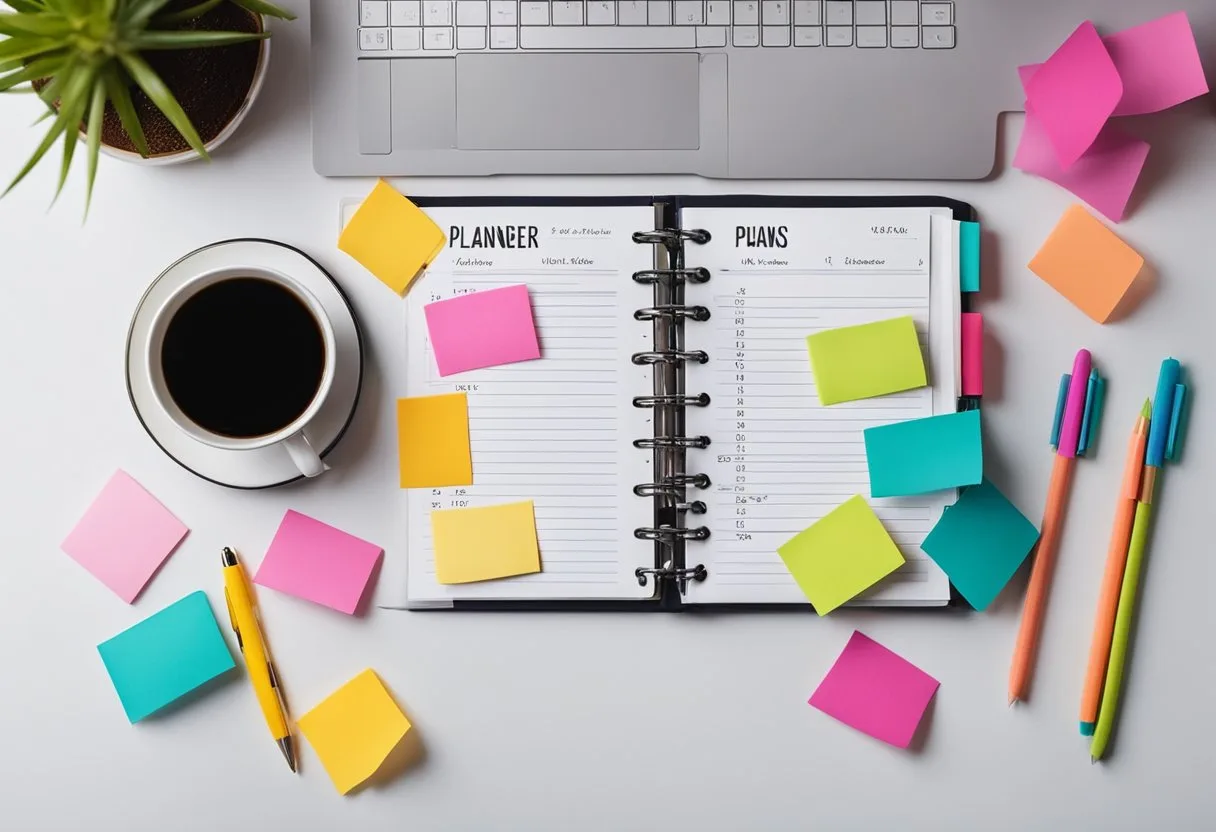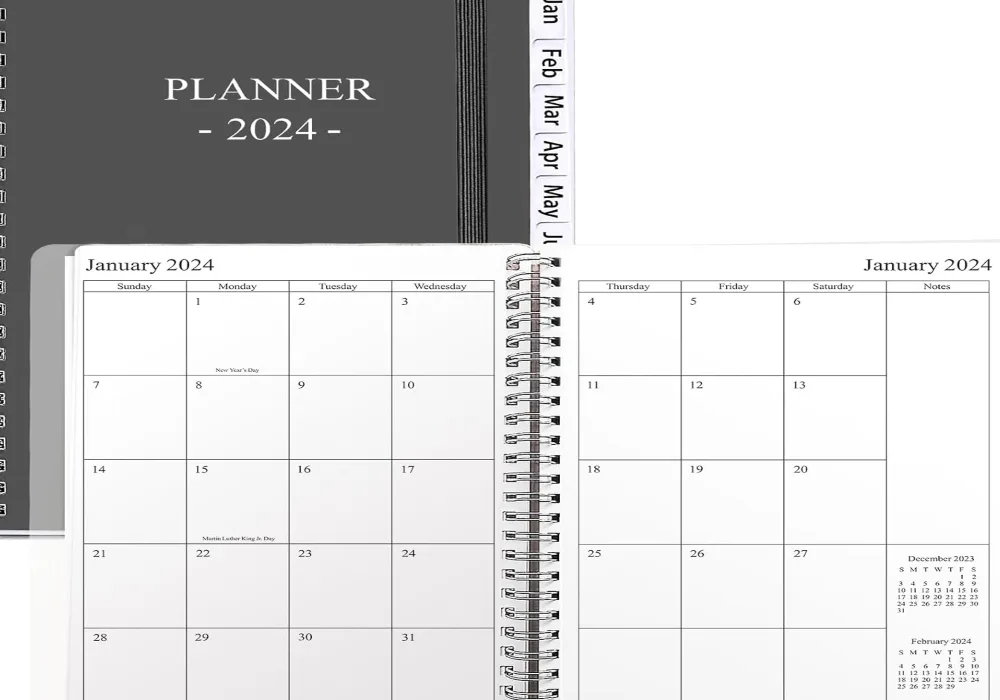Using a planner is a great way to organize your life and stay on top of your tasks and goals. Whether you are a busy professional, a student, or a stay-at-home parent, a planner can help you manage your time and increase your productivity. In this blog post, I will show you how to use a planner to organize your life for effective and productive daily life
To organize your life using a planner, start by selecting a planner that suits your needs and preferences. There are many types of planners available, including daily, weekly, and monthly planners, as well as digital and paper-based options. Choose a planner that fits your lifestyle and provides enough space to write down your tasks and goals.
Once you have a planner, use it consistently to stay organized and on track. Write down all of your tasks and deadlines, and prioritize them based on their importance and urgency. Use your planner to plan your day, week, and month, and make sure to schedule in time for self-care and relaxation.
Choosing the Right Planner
When it comes to choosing the right planner, there are a few things to consider. The first step is to decide whether to go for a paper or digital planner. Each option has its own benefits and drawbacks, so it’s important to weigh them carefully.
Paper vs. Digital Planners
Paper planners are traditional and offer a tangible experience that many people enjoy. They come in a variety of sizes and layouts, and you can customize them to suit your needs. However, they can be bulky and difficult to carry around.
On the other hand, digital planners are tech-savvy and offer a streamlined experience. They can be accessed from anywhere with an internet connection, and they often come with features such as reminders and syncing. However, they can be overwhelming for people who prefer a more tactile experience.
Determining Planner Size and Layout
Once you’ve decided on paper or digital, the next step is to determine the size and layout of your planner. The size of your planner will depend on how much you need to write down and how portable you need it to be. The layout of your planner will depend on your personal preferences and organizational style. Some people prefer daily layouts, while others prefer weekly or monthly layouts.
Essential Features for Organization
When choosing a planner, there are a few essential features to look for to ensure that it will help you stay organized. These include:
- A calendar: This will help you keep track of important dates and deadlines.
- To-do lists: These will help you prioritize tasks and stay on top of your workload.
- Notes section: This will allow you to jot down ideas and reminders as they come up.
- Customizable sections: This will allow you to tailor your planner to your specific needs.
Choosing the right planner is a personal decision that requires careful consideration. By weighing the benefits and drawbacks of paper vs. digital planners, determining the size and layout of your planner, and looking for essential features for organization, you can find a planner that works for you.
How to use a planner to organize your life
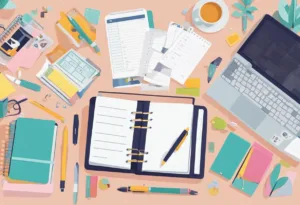
- Choose the Right Planner: Select a planner that suits your needs, whether it’s daily, weekly, or monthly, and has enough space for all your tasks and activities.
- Familiarize with Your Planner: Take some time to understand the layout and features of your planner, such as monthly overviews, weekly spreads, and notes sections.
- Set Your Goals: Define long-term and short-term goals and write them down in the goals section if your planner has one.
- Monthly Planning: At the start of each month, note all important dates such as appointments, birthdays, and deadlines in the monthly overview.
- Weekly/Daily Planning: Break down your monthly goals into weekly or daily tasks and schedule them accordingly.
- Prioritize Tasks: Highlight or use symbols to mark high-priority tasks so you can focus on what’s most important each day or week.
- time Blocking: Allocate specific time blocks for tasks or activities to manage your time effectively and minimize procrastination.
- Review and Adjust: At the end of each day or week, review what you’ve accomplished and carry over any incomplete tasks to the next time slot.
- Track Habits: Use your planner to keep track of habits you’re trying to build or maintain, like exercise, reading, or meditating.
- Use the Notes Section: Utilize any extra space for jotting down thoughts, ideas, or important information you may need to reference later.
- Personalize Your Planner: Make your planner work for you by adding tabs, stickers, or color-coding to easily navigate and enjoy using it.
- Regular Check-Ins: Set aside time each week to plan for the week ahead and reflect on the past week’s successes and areas for improvement.
- Stay Flexible: Life is unpredictable, so be prepared to adjust your plans as needed while keeping your goals in sight.
- Carry It With You: Keep your planner with you as much as possible so you can update it on the go and always know what’s next on your agenda.
- Make It a Habit: Consistently use your planner every day to establish a routine and ensure it becomes an integral part of organizing your life.
Setting Up Your Planner
A planner is a great tool to help organize one’s life. It can be used to keep track of important dates, tasks, and events. However, before one can start using their planner, they need to set it up properly. In this section, we will discuss how to structure your planner, incorporate color coding and accessories, and start with key dates and tasks.
Structuring Your Planner
The first step to setting up your planner is to decide on the layout and sections. There are many different types of planners available, each with their own unique structure. Some popular options include daily, weekly, and monthly planners. It is important to choose a planner that fits your needs and lifestyle.
Once you have chosen a planner, you can start structuring it. Divide your planner into sections based on your needs. Some common sections include work, personal, and health. You can also create sections for specific projects or goals.
Incorporating Color Coding and Accessories
To make your planner more visually appealing and easier to use, consider incorporating color coding and accessories. Color coding can be used to differentiate between different sections or types of tasks. For example, you can use red for work-related tasks and blue for personal tasks.
Accessories such as stickers, tabs, and bookmarks can also be used to make your planner more functional and fun. Stickers can be used to mark important dates or events, while tabs and bookmarks can be used to quickly navigate between sections.
Starting with Key Dates and Tasks
Once you have structured your planner and incorporated color coding and accessories, it is time to start filling it in. Begin by adding key dates and tasks such as birthdays, appointments, and deadlines. This will give you a clear picture of what you need to accomplish in the coming weeks and months.
It is important to be realistic when setting tasks and deadlines. Break larger tasks into smaller, more manageable ones. This will make it easier to stay on track and avoid feeling overwhelmed. Setting up your planner is an important step in staying organized and productive. By structuring your planner, incorporating color coding and accessories, and starting with key dates and tasks, you can make the most of this valuable tool.
Creating Effective Routines
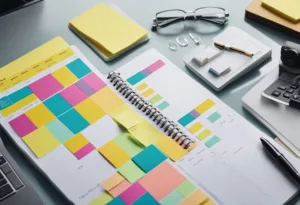
Creating effective routines is an essential part of using a planner to organize one’s life. By establishing daily and weekly routines, individuals can ensure that they stay on top of their tasks and responsibilities. In this section, we will discuss how to create effective routines and how to balance flexibility and consistency to maximize productivity.
Establishing Daily and Weekly Routines
Establishing daily and weekly routines is a crucial step in using a planner effectively. Individuals can start by identifying the activities they need to complete each day and each week. They can then create a schedule that allows them to complete these activities efficiently. For example, they can allocate specific times for checking emails, making phone calls, and completing household chores.
Balancing Flexibility and Consistency
Balancing flexibility and consistency is another critical aspect of creating effective routines. While it is essential to have a consistent routine, it is also important to be flexible and adaptable. Individuals should be willing to adjust their routines when necessary to accommodate unexpected events or changes in their schedules. They can also use their planner to track their progress and make adjustments as needed.
Time Blocking for Productivity
Time blocking is an effective technique for increasing productivity and staying on track. It involves breaking down tasks into smaller, manageable chunks and allocating specific times for each task. Individuals can use their planner to create a time-blocked schedule that allows them to focus on one task at a time and avoid distractions. By prioritizing tasks and allocating specific times for each one, individuals can maximize their productivity and achieve their goals.
Creating effective routines is an essential part of using a planner to organize one’s life. By establishing daily and weekly routines, balancing flexibility and consistency, and using time blocking for productivity, individuals can stay on top of their tasks and responsibilities and achieve their goals.
Managing Tasks and Priorities
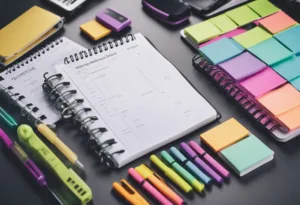
Keeping track of tasks and priorities is a crucial aspect of using a planner to organize your life. Here are some tips for managing tasks and priorities effectively:
Prioritizing with To-Do Lists
To-do lists are a great way to prioritize tasks and stay organized. Start by writing down all the tasks you need to complete, then prioritize them based on their importance and urgency. You can use symbols, colors, or numbers to indicate the level of priority for each task. For example, use a red exclamation mark to indicate urgent tasks, a yellow triangle for important tasks, and a green circle for less important tasks.
Setting Goals and Deadlines
Setting goals and deadlines is an effective way to stay motivated and focused. Identify your long-term goals, then break them down into smaller, achievable goals. Assign deadlines to each goal and add them to your planner. This will help you stay on track and ensure you are making progress towards your goals.
Staying on Track with Reminders and Reviews
Reminders and reviews are essential for staying on track with your tasks and goals. Set reminders for important deadlines, meetings, and appointments. Review your planner regularly to ensure you are staying on top of your tasks and priorities. This will help you make any necessary adjustments and stay organized.
Integrating Life and Work
When it comes to organizing your life with a planner, it’s important to strike a balance between work and personal life. Juggling work and personal life can be challenging, but with the right planning, it can be easier to manage. Here are some tips on how to integrate life and work using a planner.
Juggling Work and Personal Life
One of the key benefits of using a planner is that you can keep track of both work and personal tasks in one place. By incorporating both aspects of your life into your planner, you can ensure that neither is neglected. This can help you find balance and reduce stress.
To get started, create a schedule that includes both work and personal commitments. This can include deadlines, meetings, appointments, and even leisure activities. By having a clear overview of your schedule, you can avoid double booking and ensure that you have enough time for everything.
Incorporating Meal Plans and Budgets
Another way to integrate your life and work is by incorporating meal plans and budgets into your planner. Planning your meals ahead of time can save you time and money, and can also help you eat healthier. By including grocery lists and meal plans in your planner, you can ensure that you have everything you need for the week.
In addition, budgeting is an important aspect of both work and personal life. By including a budget tracker in your planner, you can keep track of your expenses and ensure that you are staying within your means. This can help you reduce financial stress and improve your overall well-being.
Planning for Leisure and Events
Finally, it’s important to plan for leisure and events in your planner. This includes vacations, social events, and hobbies. By scheduling leisure time into your planner, you can ensure that you have time to relax and recharge. This can help you maintain a healthy work-life balance and reduce stress.
Integrating life and work in your planner can help you lead a more organized life with less stress. By incorporating work and personal commitments, meal plans and budgets, and leisure time into your planner, you can find balance and improve your overall well-being.
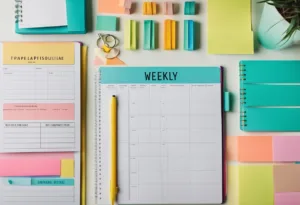
Frequently Asked Questions
What are the best strategies for setting up a life planner?
When setting up a life planner, it is important to start with a clear understanding of your goals and priorities. This will help you to determine the categories and sections that you need to include in your planner. Some of the most common categories include work, personal, health, and finances. It is also important to choose a planner that fits your lifestyle and preferences. For example, some people prefer a digital planner, while others prefer a paper planner. Ultimately, the key is to find a system that works for you and stick to it consistently.
What are some essential items to include in a planner for optimal organization?
The essential items to include in a planner depend on your personal needs and preferences. However, some common items that can help with organization include a monthly and weekly calendar, to-do lists, a section for notes, and a goal tracker. Incorporating color coding and stickers can help to visually organize your planner and make it more fun to use.
How can someone with ADHD effectively utilize a planner to manage their daily life?
For someone with ADHD, it can be helpful to choose a planner with a clear structure and minimal distractions. Breaking down tasks into smaller, more manageable steps can also make it easier to stay on track. Incorporating visual cues such as color coding and highlighting can help to draw attention to important tasks and deadlines.
What are the benefits of using a planner to stay organized?
Using a planner can provide numerous benefits for staying organized, including improved time management, increased productivity, reduced stress, and better goal setting. By having a clear overview of your schedule and tasks, you can prioritize your time more effectively and avoid overcommitting yourself.
How can a student tailor their planner to track academic and personal tasks?
For students, it can be helpful to include a section for tracking academic assignments and deadlines, as well as a section for personal tasks such as extracurricular activities and social events. Color coding can also be useful for distinguishing between different types of tasks and deadlines. Setting aside specific times for studying and completing assignments can help to ensure that academic tasks are completed in a timely manner.
What approaches can you take to maintain a planner when your schedule seems empty?
Even when your schedule seems empty, it is still important to maintain a planner to stay organized and productive. One approach is to use your planner to set goals and plan out your day, even if you don’t have many specific tasks to complete. This can help to provide structure and direction to your day, and ensure that you are making progress towards your larger goals. Using your planner to track habits such as exercise and self-care can help to maintain consistency and build healthy habits over time.

